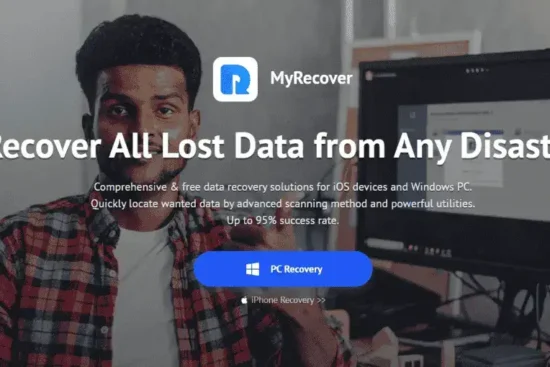
In the ever-evolving landscape of blogging and digital marketing, staying ahead of the curve is essential to maximize your revenue potential. One powerful tool that continues to be a cornerstone of successful online businesses is email marketing. To help you make the most of this invaluable resource, we’ve compiled a comprehensive list of the “Top 13 Email Marketing Tools and Services.” Whether you’re a seasoned blogger or a digital marketing enthusiast, these tools and services are designed to supercharge your email campaigns, engage your audience, and ultimately boost your revenue. Join us as we explore these game-changing solutions that can take your online presence to the next level.
I. Why Email Marketing Matters in Blogging and Digital Marketing:
In the ever-evolving landscape of blogging and digital marketing, staying ahead of the competition and maximizing revenue is a constant challenge. One invaluable tool that can help you achieve these goals is email marketing. In this article, we’ll delve into why email marketing is a crucial element in your blogging and digital marketing strategy, and we’ll introduce you to the top 13 email marketing tools and services that can supercharge your efforts.
1. Building Stronger Connections:
Email marketing provides you with a direct line of communication to your audience. It allows you to nurture and build stronger connections with your readers and potential customers. When someone subscribes to your email list, they are expressing genuine interest in your content or products. This interest is a valuable asset that can be leveraged to foster trust and loyalty over time.
2. Effective Content Distribution:
With email marketing, you can deliver your blog posts, newsletters, and promotional content directly to your subscribers’ inboxes. This targeted approach ensures that your content reaches the right audience, increasing the chances of engagement and conversion.
3. Higher Conversion Rates:
Email marketing consistently outperforms other marketing channels when it comes to conversion rates. According to industry data, the average email conversion rate is significantly higher than that of social media or search engine traffic. Well-crafted email campaigns can drive more sales and revenue for your blog or digital marketing efforts.
4. Personalization and Segmentation:
Modern email marketing tools allow for advanced personalization and segmentation. You can tailor your messages to suit the preferences and behaviors of individual subscribers. This level of customization makes your emails more relevant and engaging, ultimately leading to better results.
5. Automation and Efficiency:
Email marketing tools offer automation features that can save you time and effort. You can set up automated email sequences, drip campaigns, and autoresponders to deliver timely and relevant content without manual intervention. This efficiency is invaluable for busy bloggers and digital marketers.
6. Data-Driven Decision Making:
Email marketing platforms provide comprehensive analytics and reporting. You can track open rates, click-through rates, conversion rates, and more. This data allows you to make informed decisions and refine your strategies for better results.
7. Cost-Effective Marketing:
Compared to many other marketing channels, email marketing is cost-effective. The return on investment (ROI) for email campaigns is often higher, making it an attractive option for bloggers and digital marketers with limited budgets.
8. Retention and Customer Lifetime Value:
Email marketing isn’t just about acquiring new customers; it’s also about retaining and nurturing existing ones. By providing valuable content and offers to your subscribers, you can increase customer lifetime value, leading to long-term revenue growth.
9. Cross-Promotion Opportunities:
Collaborating with other bloggers or businesses in your niche becomes easier with email marketing. You can cross-promote each other’s content or products to expand your reach and tap into new revenue streams.

II. Criteria for Choosing the Right Email Marketing Tools and Services:
Choosing the right Email Marketing Tools and Services is a critical decision for bloggers and digital marketers. The success of your email marketing campaigns often hinges on the tool you select. To make an informed choice, it’s essential to consider the following key factors:
1. Pricing:
- Cost is a significant factor. Evaluate pricing plans and consider your budget constraints. Ensure the tool’s pricing structure aligns with your needs and growth expectations.
2. Features and Functionality:
- Examine the features offered. Look for essential features like email list management, customizable templates, A/B testing, analytics, and mobile responsiveness. Consider your specific needs and whether the tool provides advanced features such as automation, segmentation, and personalization.
3. Scalability:
- As your blog or digital marketing efforts grow, your email list will expand. Ensure the chosen tool can scale with your needs without sacrificing performance. Look for options that accommodate both small and large subscriber lists.
4. Ease of Use:
- User-friendliness matters, especially if you’re not tech-savvy. A user-friendly interface makes it easier to create and send emails, manage subscribers, and analyze campaign performance. Test the tool’s usability before committing.
5. Email Templates:
- Templates can save time and maintain a consistent brand image. Check if the tool offers a variety of customizable templates that match your blog’s or brand’s style. Ensure they are mobile-responsive for a seamless user experience.
6. Automation Capabilities:
- Automation streamlines your email marketing efforts. Look for tools that allow you to set up automated workflows, drip campaigns, and autoresponders. Automation can improve engagement and save you time in the long run.
7. Deliverability Rates:
- High email deliverability rates are crucial for your messages to reach subscribers’ inboxes. Investigate the tool’s reputation for deliverability and its measures to prevent spam.
8. List Management and Segmentation:
- Efficiently managing your email list is essential. Ensure the tool provides features for list segmentation, allowing you to send targeted messages to specific subscriber segments based on their behavior or demographics.
9. Analytics and Reporting:
- Comprehensive analytics help you understand how your campaigns perform. Look for tools that provide detailed reports on open rates, click-through rates, conversion rates, and other relevant metrics. Data-driven insights can inform your strategies.
10. Integration Capabilities:
– Consider the tool’s ability to integrate with other software and platforms you use, such as your blogging platform, e-commerce system, or CRM. Seamless integrations can streamline your workflow and data management.
11. Customer Support and Resources:
– Evaluate the level of customer support offered. Are there readily available resources like tutorials, documentation, or a knowledge base? Good customer support can be invaluable when you encounter issues or have questions.
12. Compliance and Security:
– Ensure the tool complies with email marketing regulations, such as CAN-SPAM or GDPR. Check for robust security measures to protect your data and your subscribers’ information.
13. Reviews and Recommendations:
– Read reviews and seek recommendations from other bloggers or digital marketers who have experience with the tool. Real-world experiences can provide valuable insights into its strengths and weaknesses.
14. Trial Period or Money-Back Guarantee:
– Whenever possible, opt for tools that offer a trial period or a money-back guarantee. This allows you to test the tool’s suitability for your needs before committing long-term.
By carefully considering these factors and aligning them with your specific goals and requirements, you can make an informed decision when selecting the right Email Marketing Tools and Services for your blogging and digital marketing endeavors.
III. The Top 13 Email Marketing Tools and Services:
- Mailchimp:
- Known for its user-friendly interface.
- Offers marketing automation, email templates, and detailed analytics.
- Suitable for businesses of all sizes.
- Constant Contact:
- Ideal for beginners with its easy-to-use platform.
- Provides customizable email templates and list management.
- Offers a robust event management tool.
- HubSpot Email Marketing:
- Part of the larger HubSpot suite.
- Features advanced analytics and automation capabilities.
- Allows for personalized email marketing.
- GetResponse:
- Offers a wide range of automation options.
- Includes webinars and landing page builders.
- Useful for businesses looking to generate leads.
- AWeber:
- A veteran in email marketing with a solid reputation.
- Provides a variety of templates and automation tools.
- Great for small to medium-sized businesses.
- ConvertKit:
- Designed for bloggers and content creators.
- Focuses on subscriber segmentation and personalized messaging.
- Offers visual automation builders.
- SendinBlue:
- Known for its affordability and transactional email capabilities.
- Features marketing automation, SMS marketing, and CRM.
- Suitable for e-commerce businesses.
- Campaign Monitor:
- Offers drag-and-drop email builder.
- Provides robust analytics and reporting.
- Popular among agencies and designers.
- ActiveCampaign:
- Known for its advanced automation and CRM features.
- Offers predictive sending and split testing.
- Suitable for businesses wanting highly personalized campaigns.
- Drip:
- Focuses on e-commerce and B2B marketing automation.
- Offers detailed customer tracking and segmentation.
- Ideal for businesses looking to improve customer retention.
- MailerLite:
- User-friendly and affordable.
- Offers automation and landing page builder.
- Suitable for small businesses and bloggers.
- SendGrid:
- Specializes in transactional email and email API.
- Scalable and reliable for high-volume senders.
- Popular among developers and large enterprises.
- Pardot by Salesforce:
- Part of the Salesforce ecosystem.
- Focuses on B2B marketing automation.
- Offers lead scoring and robust analytics.
IV. How to Implement Email Marketing for Maximum Revenue:
Implementing email marketing for maximum revenue involves a combination of strategies and best practices. Here are some actionable tips and strategies to help you effectively use email marketing tools to boost revenue:
- Segmentation is Key:
- Start by segmenting your email list based on demographics, behavior, purchase history, and engagement level.
- Tailor your email content and offers to each segment’s specific interests and needs. For example, new customers might receive a different message than loyal, repeat customers.
- Personalized Content:
- Use personalization to make your emails more relevant and engaging. Address recipients by their first name, recommend products based on their past purchases, and send personalized product recommendations.
- Personalization extends beyond the subject line and salutation; it should also be reflected in the email’s body and call-to-action.
- A/B Testing:
- Regularly perform A/B tests on different elements of your email campaigns, such as subject lines, content, images, and CTAs.
- Analyze the results to determine which variations perform best and use this data to optimize your future campaigns. Over time, this can significantly increase open rates and conversion rates.
- Automated Email Sequences:
- Set up automated email sequences for various stages of the customer journey, such as welcome emails, abandoned cart reminders, and post-purchase follow-ups.
- These sequences can nurture leads and encourage repeat purchases.
- Timing and Frequency:
- Experiment with the timing and frequency of your emails. Find out when your audience is most active and adjust your sending schedule accordingly. Avoid bombarding subscribers with too many emails, which can lead to unsubscribes.
- Mobile Optimization:
- Ensure that your emails are mobile-responsive since a significant portion of users opens emails on mobile devices. Test your emails on different screen sizes and email clients to ensure a seamless experience.
- Compelling Content and Offers:
- Craft compelling and relevant content that provides value to your subscribers. This could include exclusive discounts, educational content, or insider information.
- Create a sense of urgency with limited-time offers and promotions.
- List Hygiene:
- Regularly clean your email list to remove inactive subscribers and invalid email addresses. This can improve your email deliverability rates and save you money on email marketing tools.
- Monitoring and Analytics:
- Use email marketing analytics tools to track key metrics such as open rates, click-through rates, conversion rates, and revenue generated from email campaigns.
- Continuously analyze the data and adjust your strategy accordingly.
- Compliance with Regulations:
- Ensure that you comply with email marketing regulations, such as CAN-SPAM and GDPR, to avoid legal issues and maintain trust with your subscribers.
Success Stories:
- Amazon: Amazon uses personalized email recommendations based on users’ browsing and purchase history. This strategy accounts for a significant portion of their revenue, with many customers making purchases directly from these email recommendations.
- Airbnb: Airbnb sends personalized and location-specific email recommendations to both hosts and guests. This approach has led to increased bookings and revenue for the platform.
- Dollar Shave Club: Dollar Shave Club leverages humor and engaging content in their email marketing campaigns. Their humorous approach has helped them build a loyal customer base, resulting in substantial revenue growth.
V. Conclusion:
In conclusion, email marketing remains a cornerstone of success in the realms of blogging and digital marketing. It’s not just a communication channel; it’s a revenue-generating powerhouse. By harnessing the power of the top 13 email marketing tools and services we’ve presented, bloggers and digital marketers can unlock the potential for increased engagement, conversions, and ultimately, revenue.
Don’t just read about these tools—explore them, test them, and integrate them into your strategies. Take actionable steps to build and nurture your email list, craft compelling campaigns, and tailor your messages to your audience’s needs and preferences. Email marketing is not only about reaching your readers or customers; it’s about fostering meaningful connections and turning those connections into revenue. So, embrace these Top 13 Email Marketing Tools and Services and watch your blogging and digital marketing endeavors flourish as you maximize your revenue potential.
You can also see other articles on our website to get more information on our website.




Leave a Reply
You must be logged in to post a comment.